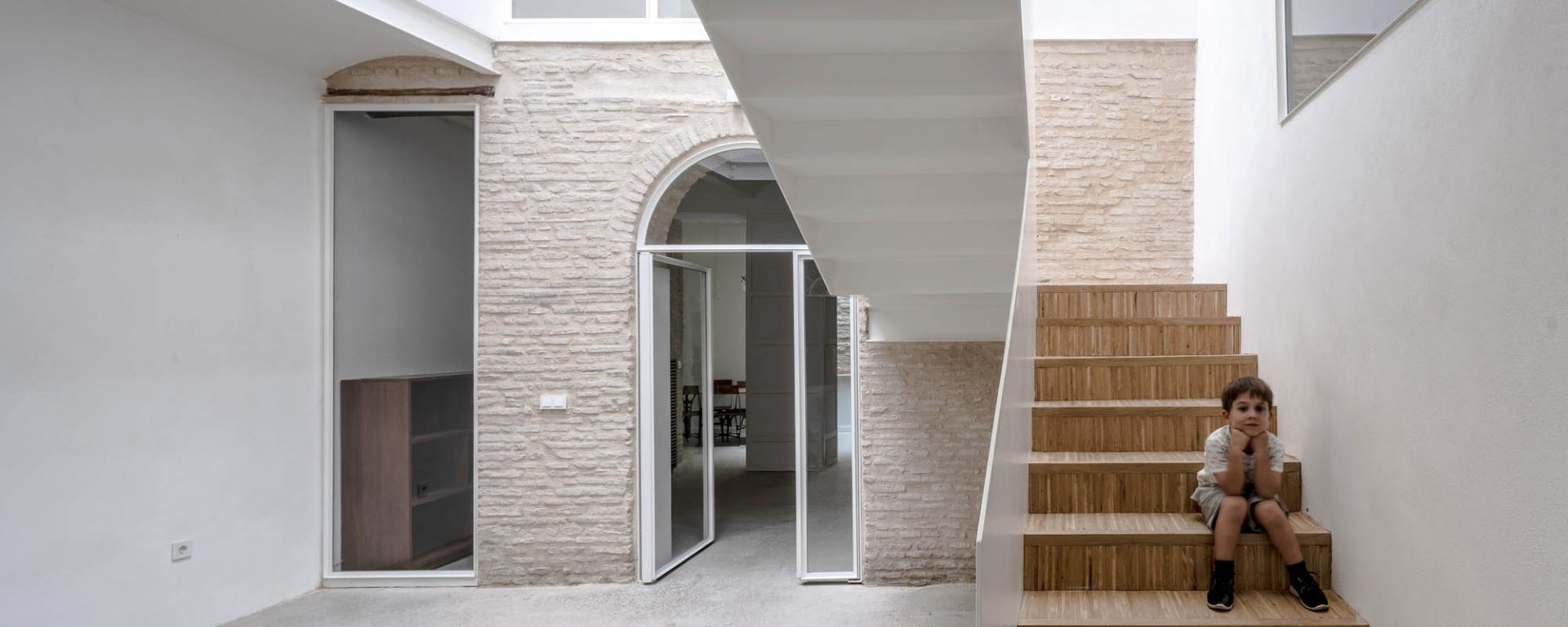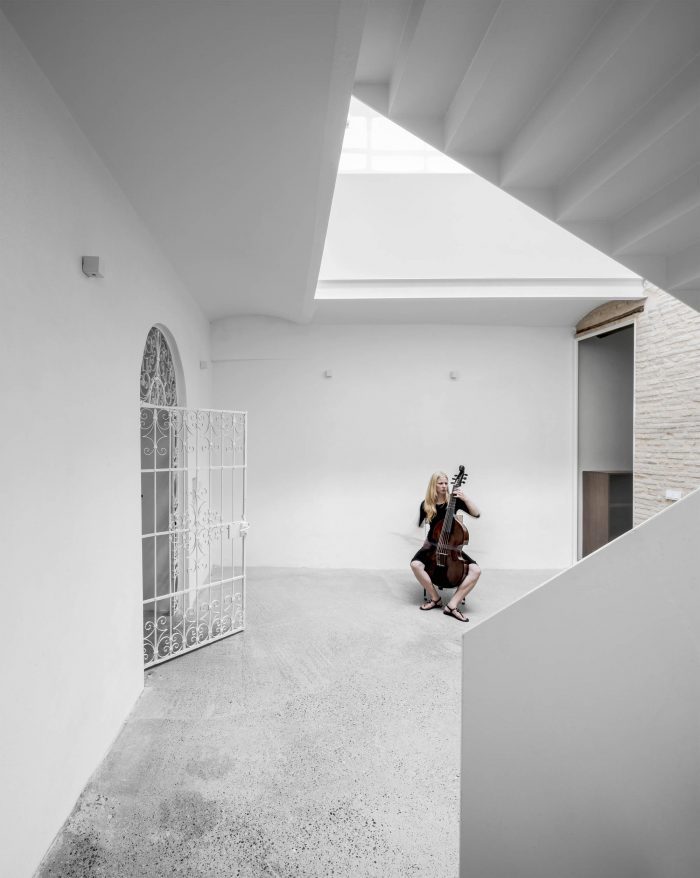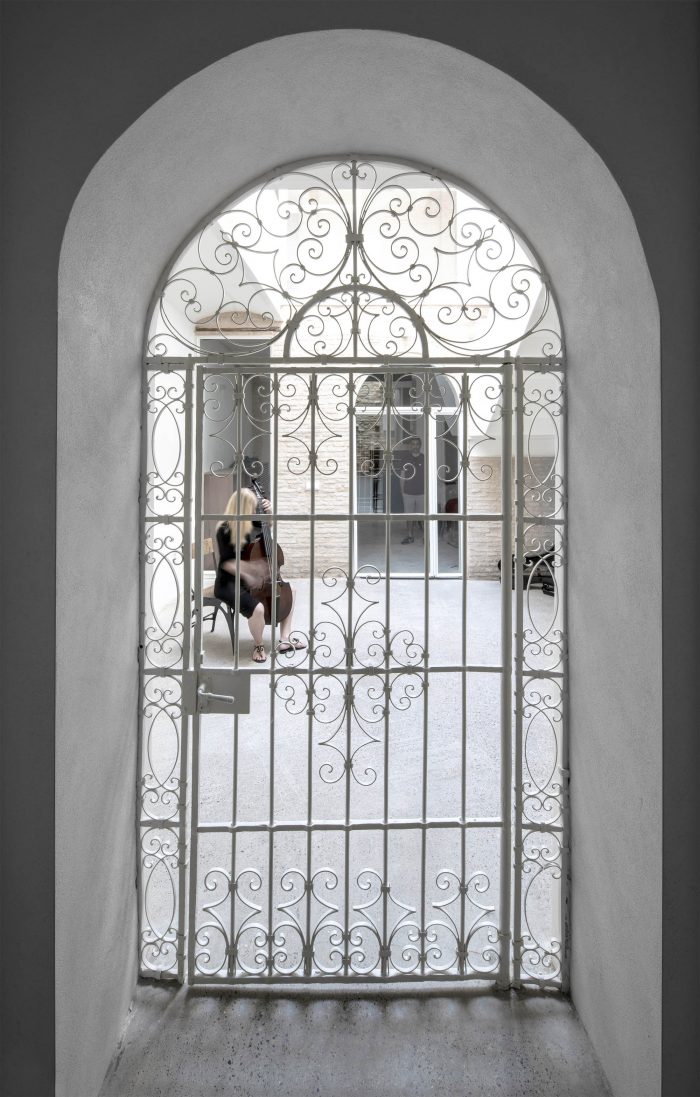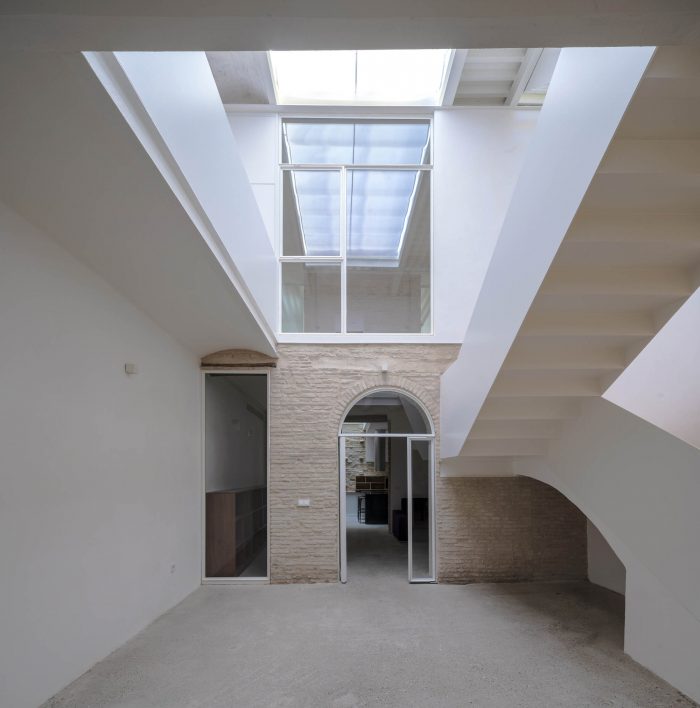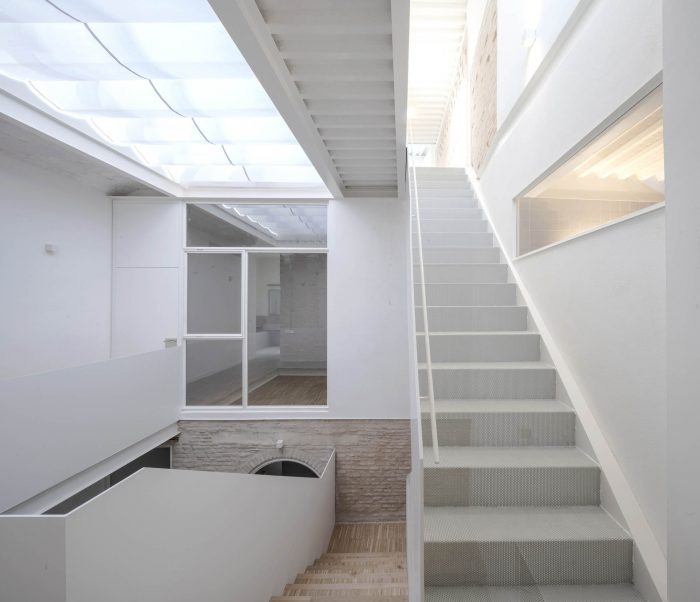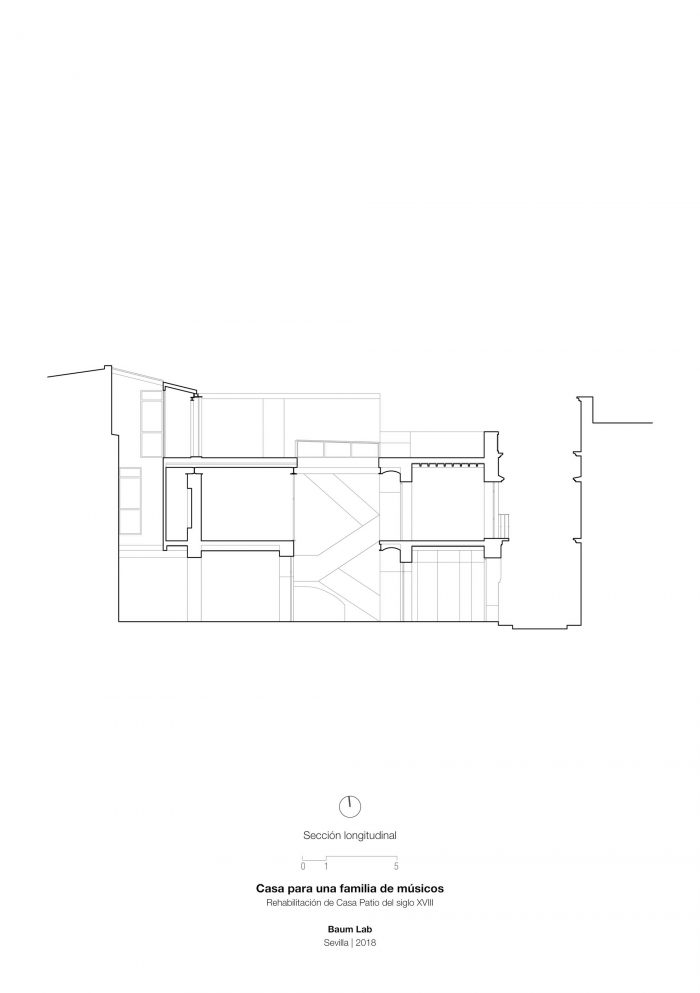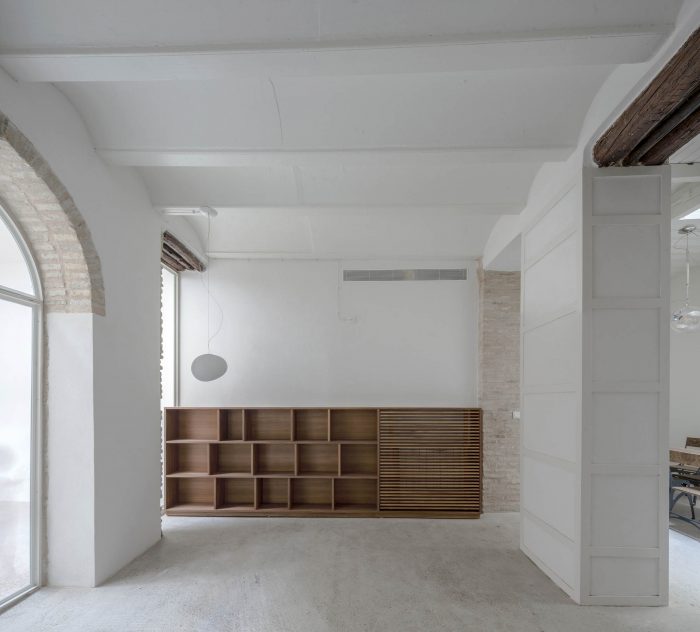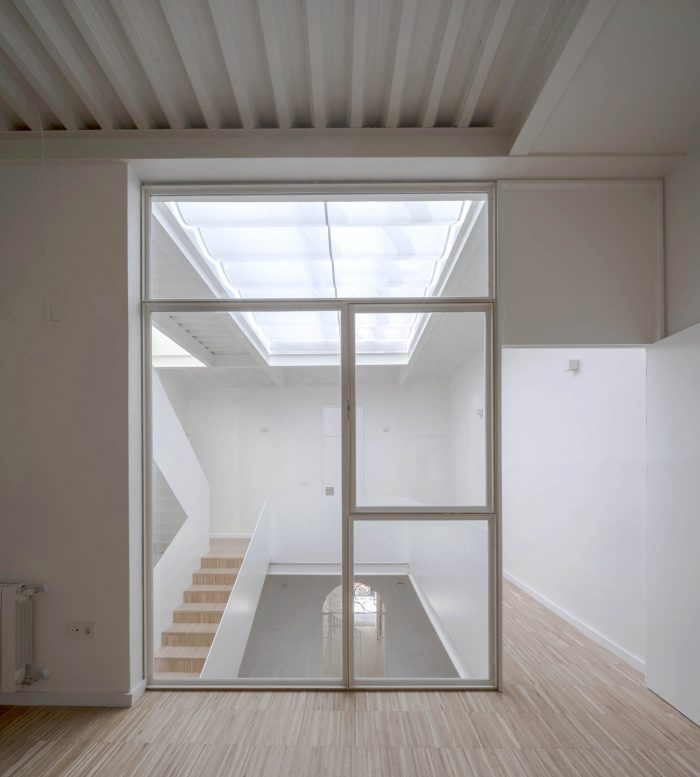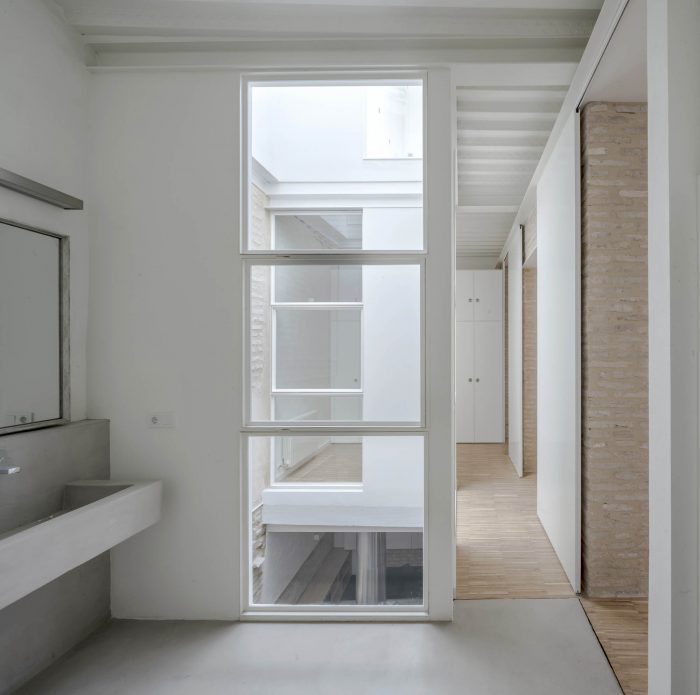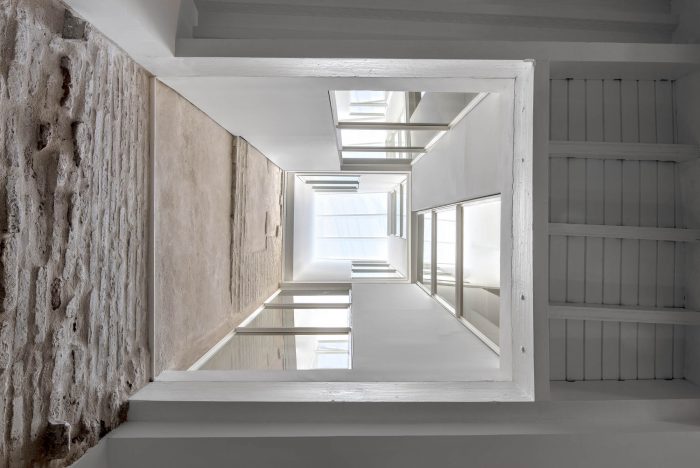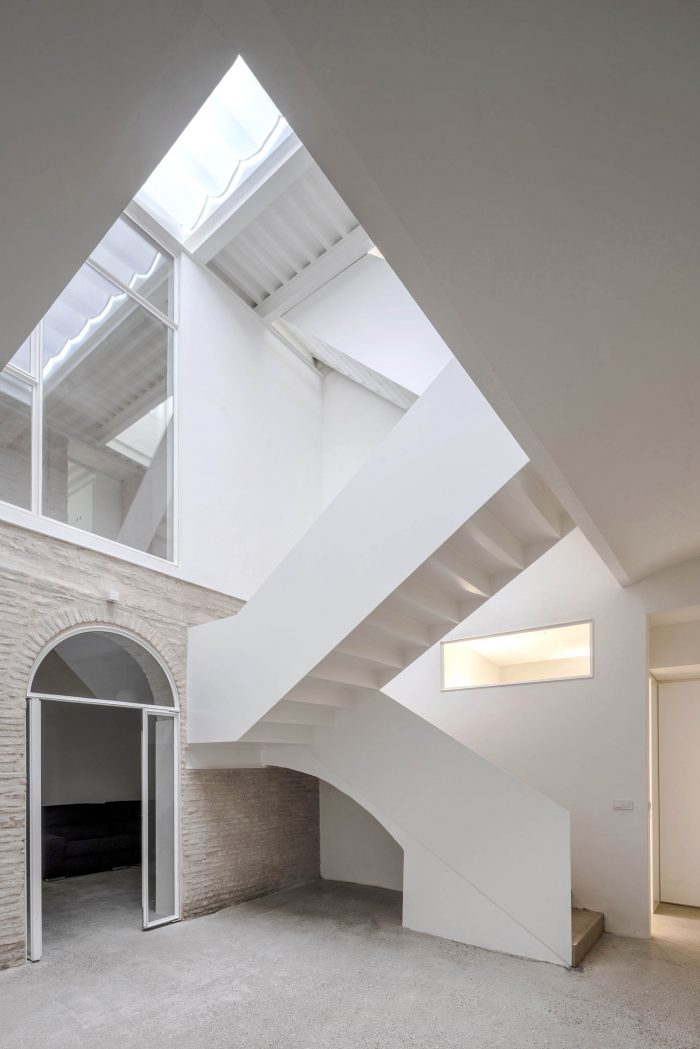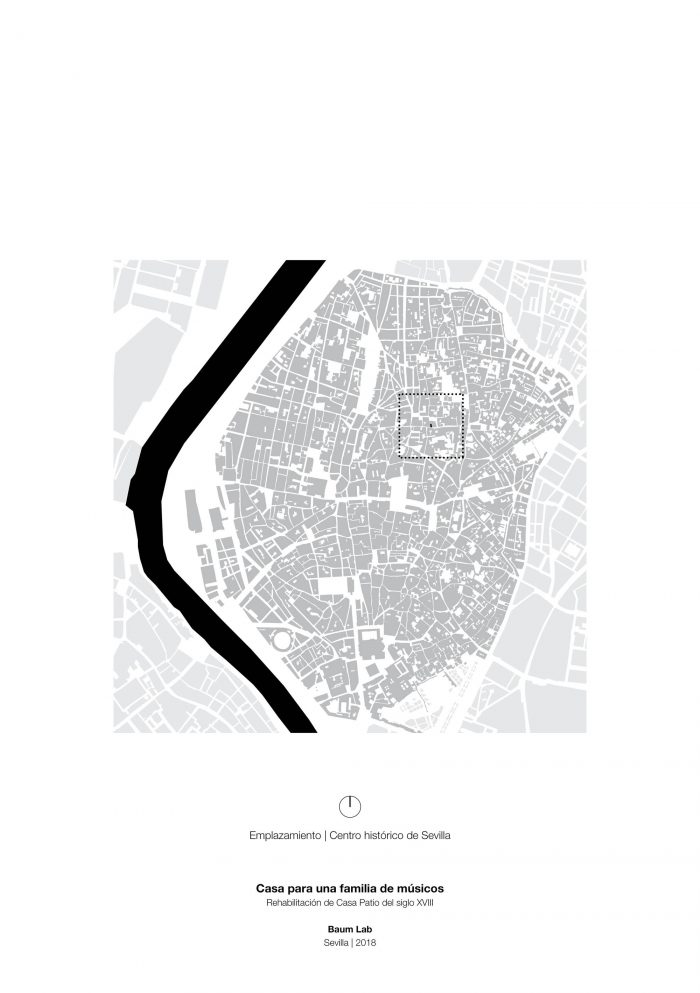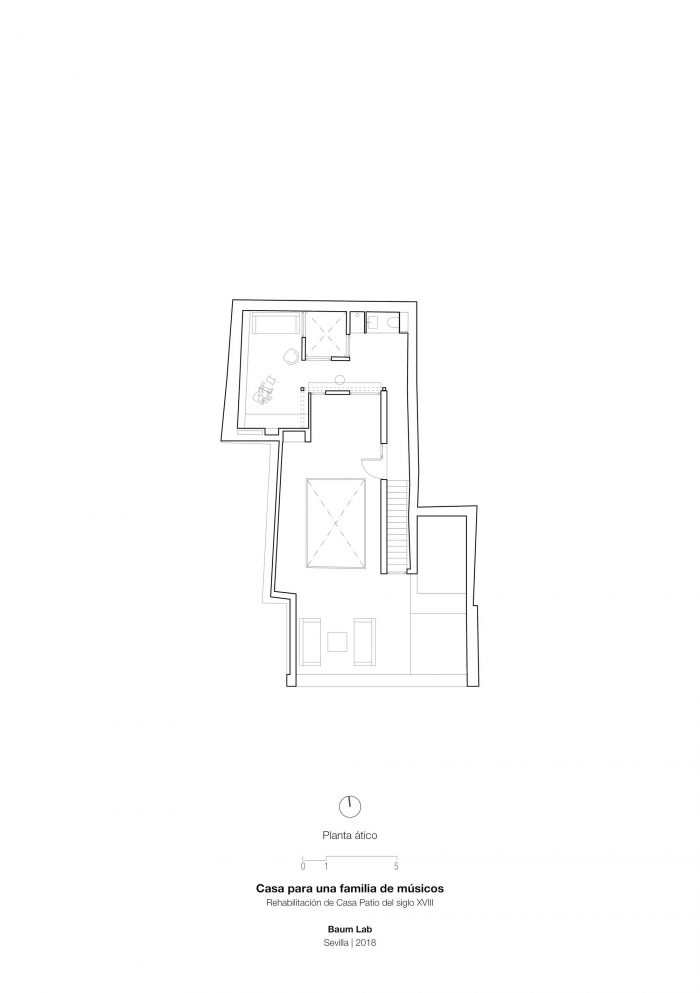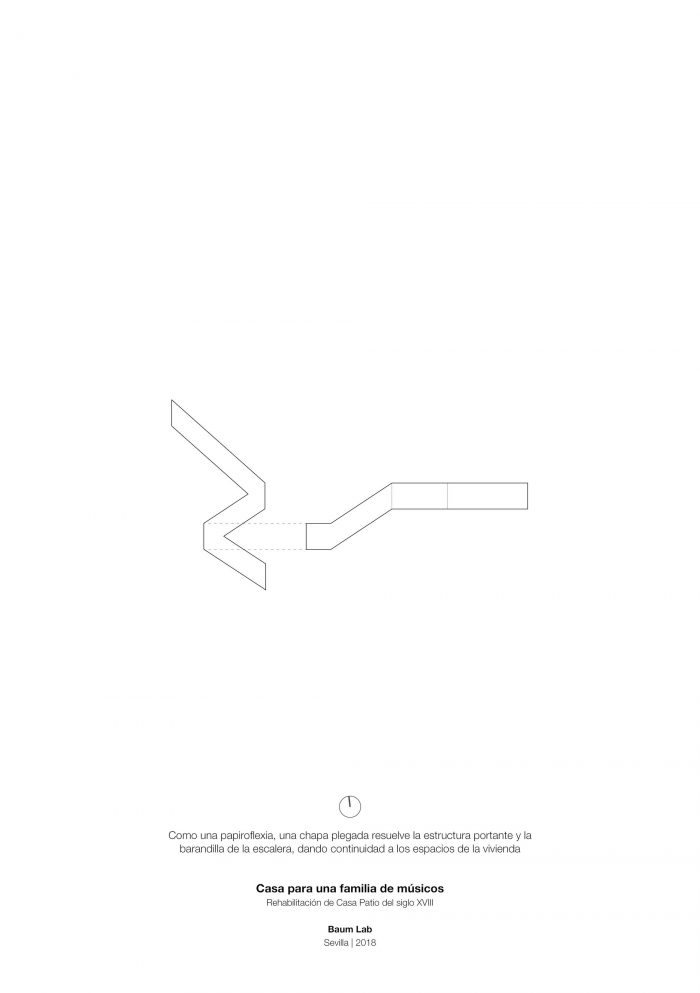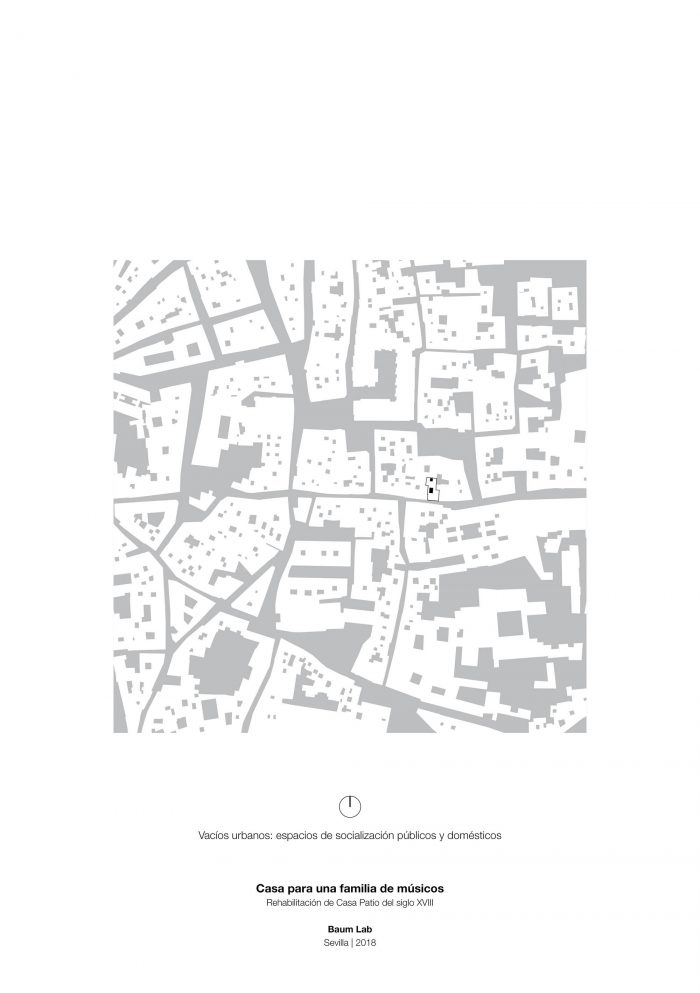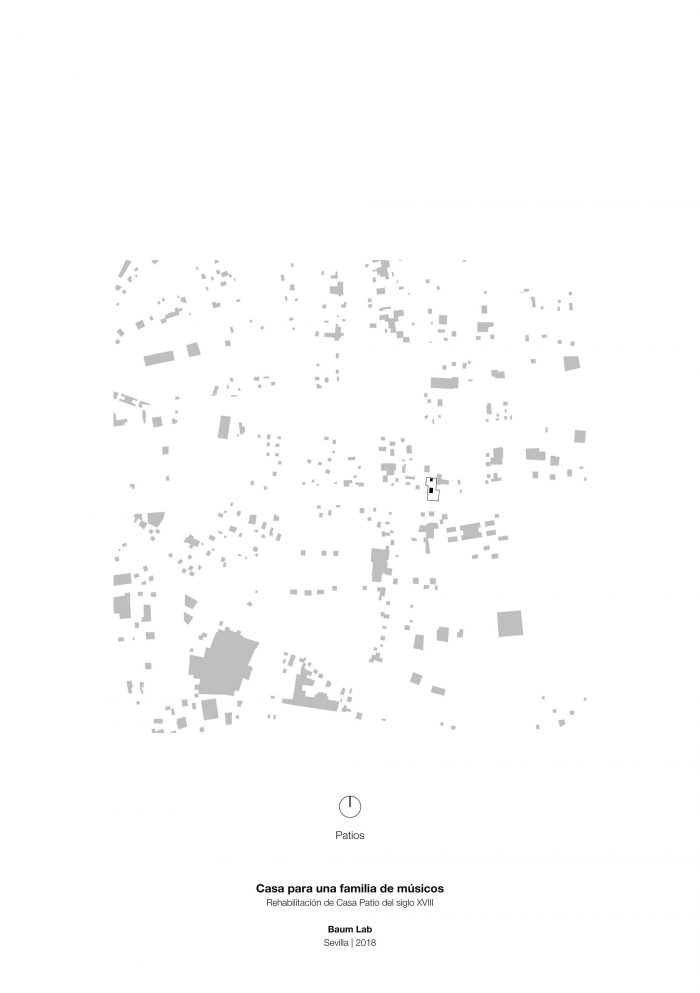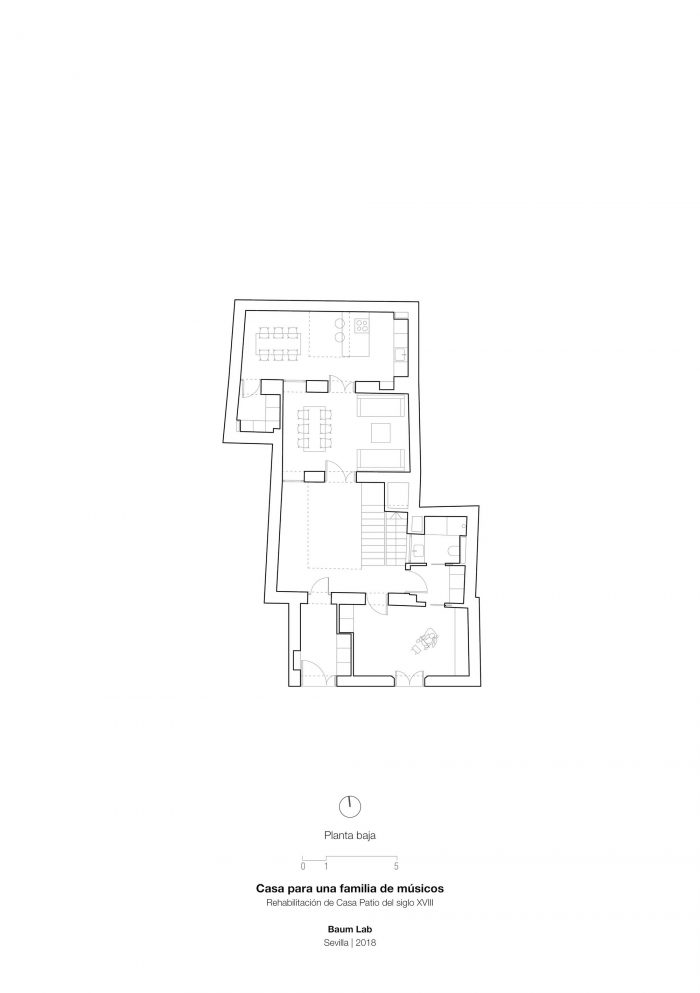城市,作为社会互动的结晶,始于家庭空间。在中间区域,公共和亲密的互动,成为一种城市力量。在古老的伊斯兰城市中,城市格局是由内而外的。这个项目反映了天井既是房屋的核心,又是城市振兴的种子的理念。
The city, as the crystallization of social interactions, begins in the domestic spaces. In-between areas, in which public and intimate interact, become an urban force. In ancient Islamic cities the urban grid was conceived from the inside out. This project reflects on the idea of the patio both as the core of the house and the seed for urban revitalization.
项目的任务是对位于塞维利亚历史中心核心地带的一座18世纪的受保护天井房屋进行翻新。该建筑最初的状况很糟糕,许多元素即将倒塌。然而,该建筑的类型学保存完好,空间价值仍然存在。我们的建议旨在确定房子的内在价值,以创造一个新的当代现实,在其中,新旧的,可以建立一个容器,一个音乐家家庭的日常。
The assignment was to refurbish a heritage protected patio house from the 18thcentury, located at the core of Seville’s historic centre. The initial condition of the building was critic, with many elements about to collapse. Nevertheless, the typology was well preserved and the spatial values were still there. Our proposal aimed at identifying the inner values of the house, in order to create a new contemporary reality in which old and new,could build a container for the everyday of a family of musicians.
该项目以隐私过滤器的概念为基础,操纵中间空间,以建立一个从公共空间到私密空间的柔和过渡。天井作为一个半私人区域出现,与街道高度相连,家庭互动可以在这里进行。房子被认为是一系列的空间,通过天井的光影连接起来。
The project works with the idea of privacy filters, manipulating the intermediate spaces in order to build a soft transition from the public spaces to the intimate ones. The patio emerges then as a semi-private area, highly connected with the street, and in which family interactions could take place. The house is thought as a sequence of spaces, linked by the light void of the patio.
就像钢琴家格伦-古尔德在1955年重新诠释巴赫́戈德堡变奏曲一样,这个项目愿意审视建筑的过去,书写新的当代篇章。在新的寄生旅游用途之外,振兴老城区也是我们的主要目标之一。远非投机取巧的方法,这种修复的目标是将一个历史中心作为一个有生命力的街区。
Just like the pianist Glenn Gould reinterpreted Bach ́s Goldberg variations in 1955, this project is willing to look at the past of the building and to write a new contemporary chapter. Revitalizing the old town, beyond new parasitic touristic uses, was also one of our main goals. Far from speculative approaches, this rehabilitation aims at a historic centre as an alive neighborhood.
在新旧问题上,我们的做法遵循了一条非常清晰的思路。诊断,净化,巩固和修复。这是一个本质上可逆的过程,巩固历史遗存,实现新的用途。因此,在对建筑的原始状况进行了非常深入的研究后,所有那些以前添加的、扭曲的元素都被移除。利用传统的技术和材料,对历史遗存进行了加固。最后,我们引入了一系列新的元素,用现代材料开发。然而,这个建议的目的并不是要在新旧之间形成强烈的对比,而是要建立一个新的连贯的现实。
The approach to the matter of old and new followed a very clear line of thoughts: Diagnose, Depuration, Consolidation and Prosthesis. It is an essentially reversible process that consolidates historical remains and enable new uses. Thus, after a very deep study of the original condition of the building, all those previously added, distorting elements were removed. The historical remains were consolidated, using traditional techniques and materials. Finally, we introduced a series of new elements, developed with contemporary materials. However, the proposal is not aiming at a violent contrast between old and new, but rather a new coherent reality.
就像在折纸练习中,栏杆系统,一个连续的金属板,被折叠到二楼,创造了一个视觉上的联系,并把光带下来。第一层楼梯有一个18世纪的原始拱顶结构,被巩固和保留下来。第二层的导航板和长廊采用砖砌拱顶结构
Like in an origami exercise, the railing system, a continuous metal plate, is folded up to the second floor, creating a visual connection and bringing the light down. The first flight of stairs had an original vaulted structure from the 18th century that was consolidated and preserved. The second nav’s slab and the galleries were built with brick vaults
该项目建议巩固传统元素,使用传统技术和材料:粘土砂浆、砖砌拱顶和木制元素。对于所有的新元素,我们使用了金属解决方案:金属板、折叠金属板和板制窗框。地板系统在底层是硬的(支撑板的结构抛光混凝土),当它到达一楼更多的私人空间时,它变得柔软(工业实木镶木地板)。
The Project proposes the consolidation of the traditional elements, using traditional techniques and materials: clay mortar, brick vaults and wooden elements. For all the new elements we used metallic solutions: metal slabs, folded metal sheets and plates-made window frames. The flooring system is hard (structural polished concrete of the bracing slab) on the ground floor and it becomes soft (industrial solid oak parquet) as it reaches the more private spaces on the first floor.
建筑师: Baum Lab
面积 : 310 m²
年份:2018年
牵头建筑师:Baum Lab, Marta Barrera Altermir, Javier Caro Domínguez, Miguel Gentil Fernández
设计团队:Daniel Leiva Rodríguez, Fco Javier Romero Varo, Gonzalo Mendoza Cortés, Lola Viega Limón, Javier Serrano Fajardo, Diego Darfia Montaño
合作者:Carlos Isotta Sánchez
城市 : Costa Mesa
国家:美国
Architects: Baum Lab
Area: 310 m²
Year: 2018
Lead Architect: Baum Lab, Marta Barrera Altermir, Javier Caro Domínguez, Miguel Gentil Fernández
Design Team:Daniel Leiva Rodríguez, Fco Javier Romero Varo, Gonzalo Mendoza Cortés, Lola Viega Limón, Javier Serrano Fajardo, Diego Darfia Montaño
Collaborators :Carlos Isotta Sánchez
City:Costa Mesa
Country:United States

